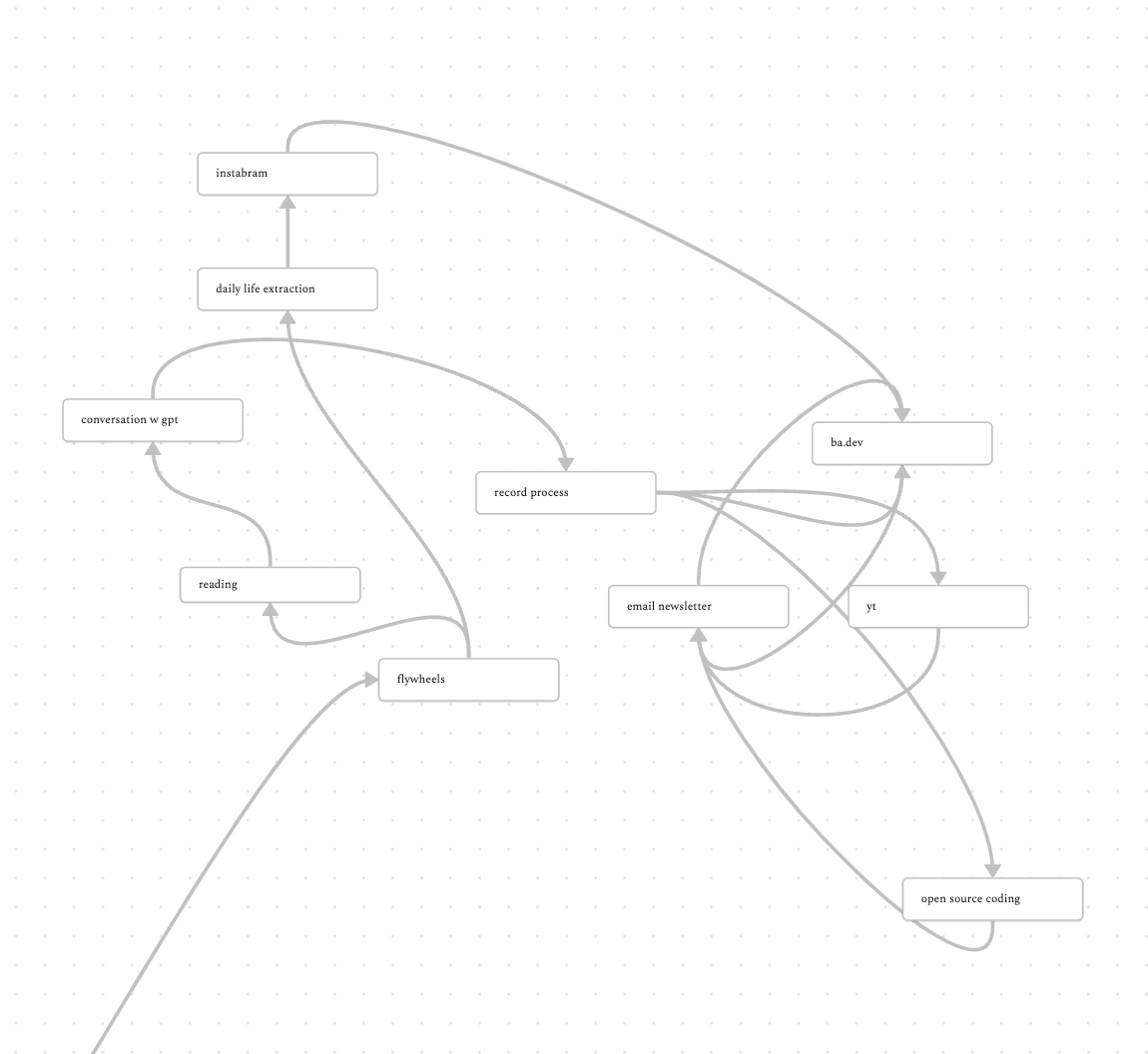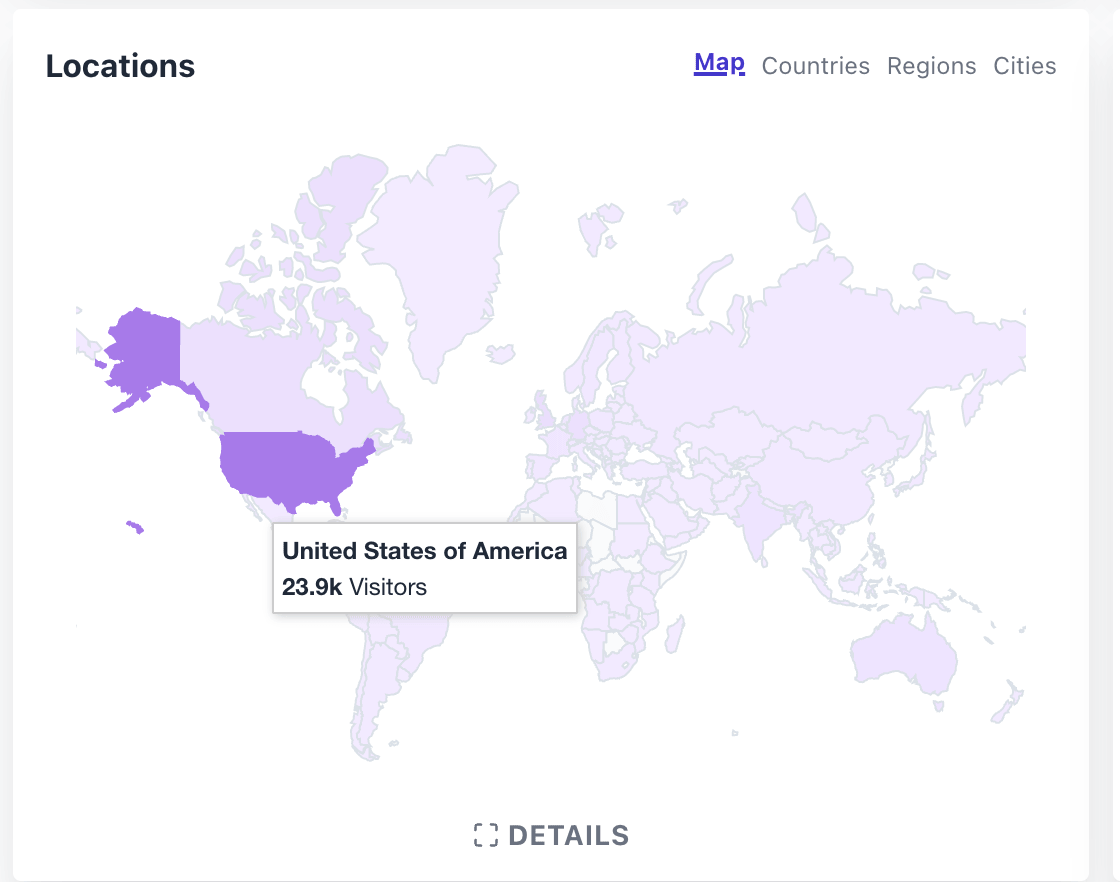Do Less, Better (with leverage!)
How can entrepreneurs use leverage to maximize their profits and minimize their losses?

- ARBITRAGE
- Running a Zero Waste Flywheel
- Do Less, Better (with leverage!)
- Issue 38: The Art of Self-Surveillance

TLDR: Entrepreneurs, like everyone else, are participants of reality, which means that they will be pulled by both external and internal forces. You should think of your endeavors like a business, and you should consider your Profit/Losses. The name of the game when it comes to P/L is leverage. Leverage is everything. Finally, real practical examples of revenue generating leverage and cost saving leverage.
Preamble
To participate in the game of entrepreneurship is to give implicit consent to be dragged around by reality like a amoeba in the ocean. At any given time, the steward and agent of a business must choose how to delegate energy given the whims and winds of reality.
There are two types of demands from reality: external demands and internal demands. Internal demands include (but are not limited to): your core (rigid) values, your mental state, your physical state, and your perception (pessimism/optimism), etc.. External demands include (but are not limited to): your society's ruleset, the economy, the era you reside in, the country you were born into, what technology is popular at the moment, etc.
The pragmatic entrepreneur (from French, from entreprendre; a person who undertakes a project) realizes that these forces exist somewhere between totally in their control (what time do I eat a sandwich) to completely out of their control (how many sandwiches are eaten in the world every day).
This knowledge is then funneled into the number one, most important calculation an entrepreneur needs (arguably the only formula an entrepreneur needs):
Profit = Total Revenue (Number of Units x Price Per Unit) - Total Cost (Fixed Costs + Variable Costs)
Profit and Loss
It's tempting to assume that the above calculation is only relevant to money making operations. But frankly, it can be applied to any risk/reward undertaking.
There is cost (both financial and emotional) to dating, but people on the dating market crunch the numbers in their head and hope that a lifelong relationship will have higher "revenue" through love and companionship.
The same could be said about higher education. A student takes on cost (financial, time/opportunity, mental stress) for the assurance that it will pay off with a long and impactful career.[1]
I could go on: hunting, farming, sleeping in too late, waking up too early… any discrete risk/reward with human choice can be bundled into this equation.
Indeed even at a "safe" job, a company serves as an umbrella -- swallowing bureaucratic costs like taxes and employing amongst peers with different skills, and therefore cuts the potential revenue (both financial and creative[2]) that an individual can receive.
For the purposes of this essay, I want to talk about how to manipulate this equation using one of my favorite methods: leverage.
The Importance of Leverage
Give me a lever long enough and a fulcrum on which to place it, and I shall move the world
It is widely accepted that humans are unique because of our ability to extend our consciousness (and limbs) through our tools.
Some tools manifest physically, like a hammer or a car. These physical tools greatly enhance our physical abilities, allowing us to move at hundreds of miles per hour, or casually decimate boulders.
Other tools manifest themselves conceptually, like language, or laws. These conceptual tools orient the minds of entire communities, allowing for centralized control of discrete individuals with different game theoretic incentives (this can be a good or a bad thing depending on what ideas reign supreme).
Some tools, like programming, can move between physical and conceptual. These tools are the most powerful in terms of leverage since they can affect physical change as well as alter the rules in which the game is played.
For the entrepreneur, leverage is power. Especially for indie entrepreneurs, leverage is not a nice thing to have to become successful, it is mandatory.
Leverage can be applied through cost leverage or revenue leverage. Let's talk about both below.
Cost Leverage
Cost (fixed + marginal) is how much it costs you to produce one unit of a valuable asset. An asset can be anything from a bracelet on an Etsy store, to a billion dollar oil conglomerate that ships n barrels of oil, to a blog post you are reading right now about leverage 😉.
To leverage cost, we look for ways to lower our fixed and marginal costs. These costs include: technology to produce a unit (fixed, usually) and time and effort (marginal, usually).
At the company of one level, marginal cost is your number one foe. It should be destroyed and driven to zero at all…costs.
Let's take a look at a common online undertaking -- the humble blog. How often have you come across blogs that look like this?

The author might post 1-4 times at the outset, disappear for months, spontaneously re appear six months later as if they never went away and then vanish entirely like they're the Avatar or something.
If you run across one of these people (and if you are one, no judgement) and ask them what happened, you'll generally hear the same story told in a few ways:
- The effort to write and edit the posts by myself was really high
- I get more eyeballs on Twitt-gram-book, so why wouldn't I just post there?
The saddest part about this is that these are in actuality all the same story: the cost was too high and the revenue was too low. It is even sadder because most people make a genuine effort, only to disqualify themselves at the starting line.
Fortunately, we live in an era where technology can have a massive effect on the cost of any individual unit you intend to make revenue from. Let's discuss a few (non exhaustive list).
Automation
In the example of someone in the blog business, automation is a discrete program that lowers the cost to produce an idea end to end. In my business, I have two programs that automate my workflow nearly entirely:
First, I capture ideas on iOS with a shortcut I wrote, which then pipes directly into my central vault in Obsidian. This way the cost of having a good idea is driven to near zero, since the vault will automatically surface the to-process notes for my consumption at my leisure.

Second, for publishing, I use a modified version of Obsidian Ghost Publish plugin by jaynguyens. In short, one click publish from Obsidian to Ghost plus image management, code block cleaning, special footnote HTML, etc.
These two automations (and the many more that I run on my machine) are critical to my process and the reason I was able as a solo-person to publish more than 300 posts in less than a year.
In fact, occasionally, out of cost leverage successful projects are born. One of my popular open source repositories, Bramses' Highly Opinionated Vault, was from me trying to use automation to drive the cost of my project management process down.
bramadams.dev is a reader-supported published Zettelkasten. Both free and paid subscriptions are available. If you want to support my work, the best way is by taking out a paid subscription.
AI
You've probably been inundated with AI content lately, but I'd be remiss not to discuss how pivotal AI is to driving down costs. The featured image for this blog post, the excerpt and the title are all partially or fully created with AI.
As a OpenAI developer ambassador, I have spent years working with these technologies. One of the core pillars of value LLMs provide is to find subtle complex patterns in a large body of signal and noise and transform it into another modality. In other words, GPT is really good at writing things…in other words.
AI serves as my co-creator either in code (Copilot, Stenography), writing, or project management.
In fact, another one of my popular open source repositories, ChatGPT MD was born because I needed a way to use AI in my tool of choice, Obsidian.
Flywheels
Flywheels are a conceptual leverage tool that can sit either in cost saving or revenue generating category. I've written deeply about the topic before so I won't dwell too long, but the idea is that you want to be in a position where you can convert multiple parts of your existing pipeline into revenue generating elements.
For example, you record a stream on Twitch and turn sections into independent YouTube videos that drive new viewers to your Twitch and so on and so on.
In my case, I've combined all three elements above for my ChatGPT series.
- I capture ideas from books or while I'm on the go. Those ideas wind up in Obsidian.
- From there I use ChatGPT MD to have a conversation with GPT about an idea. I record these for my YouTube channel.
- I use my AI workflow to generate assets for the video and my Obsidian Ghost publish automated workflow to publish.
It's a pretty well oiled machine, if I do say so myself, and takes very little effort to run for the outsized rewards.

notice how everything points to everything else
Revenue Leverage
Capture
Capture is basically how many units you can move. In the internet era, cost of moving bits across the internet is damn near zero but there are a few considerations you have to weigh including: your exposure to social media, and ownership.


_an example of how many "units" are moved on bramadams.dev across the globe. P.S. we need more Aussies!!!_
Basically, you want to own as much of the stack as you possible. A straightforward example: if you have 15 units of energy to spend a day on acquiring new readers/users/friends, your time would be better spent building an email newsletter (you should totally sign up for mine by clicking that lil button in the corner of your screen btw) than building a Twitter following since Twitter followers are inherently worth less. They are owned by Twitter (duh) and hard locked onto the platform where you happen to also be (along with millions of other similar people).
I use social media these days as a wheel and spoke model. This website is the core, and social media is basically an outreach center, but it does not receive the lion's share of my attention.
Quality
I hesitate to discuss quality because it is quite subjective,[3] but I do have some thoughts on the subject of dimensionality.
Akin to the flywheel above, the "quality" of a unit goes up if it exists from multiple angles. By creating an object that has more depth and breadth, you as the creator get to learn more about it, and make it better.
For example, if you write a program, dimensionality is writing a unit test, or creating a new consumer for an API. Both of these add angles to which the core product is consumed, and increase its quality.
New Channels
Adding a new channel (similar to dimensionality) can also increase revenue. Do this with sparingly and with caution however, since every new channel must be maintained with a non zero cost.
One of history’s few iron laws is that luxuries tend to become necessities and to spawn new obligations. Once people get used to a certain luxury, they take it for granted. (Location 1401)
Conclusion
In sum, use leverage to drive cost to zero and increase the amount and quality of the units that you provide. This does not have to purely relate to money making, and in fact, this conceptual tool can be applied in many areas of life.
Keep profit and loss at top of mind, and best of luck in your undertakings!
unfortunately, we know for many that is not the case
some company ndas are beyond draconian
For some reason that is well beyond my pay grade, the 1970's thought that this type of wallpaper was stylish 202301130121





